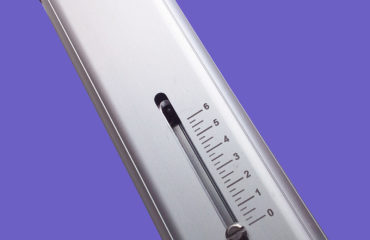Orthodontist asks how to use QTT for tongue tie assessment
Sandra, I’d like to learn a little more about the QTT Quick Tongue Tie measures you described in the newsletter. Can you answer these questions for me? 1) How do you relate MOWS and MOtts to MOmax? Is there a ratio you use to indicate limited opening?
Originally a Japanese study was done, I believe by Mukai and Mukai (don’t have it handy right now) where they used similar measures. Then some orofacial myologists adopted the method as a quick tongue tie assessment. Over the years, I’ve refined it to make it easier to use and understand. The original study (and most others who use the tool) do so as follows:
- A. You measure the MOmax (the maximum a patient can comfortably open his mouth) from mandib central inc to maxillary central inc. I usually use left to left, but it can be right to right. It is usually somewhere between 40 – 50 mm in those without TMD or other restrictions.
- B. Now, you have the patient suction the tongue FLAT to the palate, with the tip of the tongue anterior on the palate, rather than flipped back, etc. (note that with severe CL II they might not be able to suction it as anteriorly and that is fine. That is the MOWS (Mouth Open With Suction). With the suction in place, you remeasure as above from cent to central. This measurement should be at least ½ of the MOmax that you measured initially. I personally don’t like it when it is only ½ or anywhere near one half, but I take a lot of other things into consideration which I’ll go into below.
- C. Because so very FEW patients I see can suction tongue to palate at the evaluation session, I had to think of something to do. So, over several years, I took measurements of the mouth opened as fully as possible with the TIP of the tongue on the incisive papilla (“spot” on maxillary alveolar ridge). Note that tongue tip must not be curled back. I found that this measure, MOtts (Mouth Open, tongue to spot) was almost always 3-6 mm greater than the MOWS which I measured a few weeks later, once they could achieve suction. I also tested my course students doing both measurements, and with normals it is also 3 – 6mm different. Therefore, for those patients who cannot suction, you can do the MOtts and subtract 3mm (on average) and will likely have their MOWS in spite of their not being able to suction at that point in treatment.
- D. As far as limited opening, no I don’t use the tool for that purpose although it can be used as such. My expertise is not in the area of restricted opening but rather of restricted lingual frenum (frena). As I mentioned above, I use a lot of other information to determine whether frenectomy is in order or not, such as the location of attachment onto the tongue itself and if it is also submucosal (embedded); location of attachment to the floor of the mouth or mandib alveolar ridge; flexibility of the frenum, and yes the actual length of it although that is not the be all and end all factor that many think it is. As they say in real estate, location, location, and location is what matters!
2) How do you instruct the “suction” position to the patient? I’m kind of a clown and do whatever I have to do to get what I need. Usually a patient can do some type of click or cluck. I have them do it a few times and then have them “slow it down” and then I say “stop” when they are in the midst of the “suction” part of the click. Every click or cluck has the suction we need, but it is too rapid and uncontrolled and often too far back in the mouth. However, now that you know about the MOtts you don’t have to spend a lot of time on the suctioning if they cannot do it.
3) Is your QOM easier or better to use than a straight ruler? Yes, and it is disposable, which is nice…or, speech therapists usually have them keep theirs in their therapy folder for reuse (DDSs are more sanitary, I know!!!)
BTW, I’m an orthodontist very involved in myofunctional orthodontics and, of course, interested in frenum issues. I think that far more patients seen by us have restricted lingual and labial frena than previously thought. In case you haven’t heard about the IATP, International Affiliation of Tongue tie Professionals, it is an organization you might want to join. We are comprised of physicians, dental professionals, lactation consultants and a couple of other SLPs around the world. I hope this helps and that you will keep in touch.

